A lot of places in Southeastern New England are like this: Tall, skinny, young trees, cleared fields which were probably wooded, once, body of water surrounded on most sides by more woods, a combination of pine and beech and maple and oak, reeds along the banks, long aquatic grasses, maybe some sand, maybe some shells making their way up into the dirt paths. It feels tenuous, unbalanced, like there aren’t any big enough trunks to say that things have been this way for a long time, like there hasn’t been the space to fill out the way an oak tree ought to. The notches of where branches have been docked to make room for movement are round scars, and the trees are so top heavy when you look up that you feel they might fall over.
Dusk.
The process of sunset lasts a long time in the winter, but each minute, the sun drops a little lower, a little heavier, changing the light, changing the clouds, changing its reflection on the water, changing the outline of the birds flying across or away from it, changing the glare into your eyes, changing the trees into shadows, changing the world, again and again and again, nonstop. It never stops changing. Your perspective is changing. Your eyes are changing. The cold bites hard.
Still—dusk. The gloam.
Hustling and crackling dead leaves. How many things live underneath there? How many things are in the understory? Is there even an understory anymore?
Gulls calling out to each other, swooping down. The sun keeps dipping, the sky shifting, but not darkening, just kaleidoscoping. Even though it’s freezing, it feels like summer, like in a moment, someone’s mother is going to call out from the front porch, or like the second you step out from the trees, the streetlights are going to be coming to life in the in the sodium orange glow that they had before LEDs.
Is it peaceful, like this? Do you feel like you can breathe? Do you breathe? There are different weights. The clouds part, for a moment. Like a child’s drawing, the rays of the sun reach.
In another life, what kind of animal were you? In another life, were you here, too, or somewhere else? There’s familiarity here.
Standing on the sand of a cove, you look at boats. You look at signs. You think about sewage. You think about seagulls. You think about shellfish. You think about failing septic systems. You think about storms. You think about the sunset. You think about all of these things. The snow on the long grasses, weighing them down, feels permanent.
History
Goddard Memorial State Park was once the estate of Colonel Robert Hale Ives Goddard, a Rhode Island politician and Civil War veteran who, as RI State Parks’ page on the history of the park states, could have easily opted out of fighting but chose not to. Goddard’s political career after the war reflects progressivist values, and he was an active proponent for anti-corruption legislature. Like many of the rich industrialists of Rhode Island circa the mid-19th and early 20th century, the reputation he left behind was one of philanthropy. Also like other rich Rhode Island industrialists, such as Samuel P. Colt, the land that he left behind became the site of a state park, which was bequeathed to the state by his son and daughter after his death.
Part of one of the precursors to Rhode Island’s state park systems, the Metropolitan Park System, Goddard Memorial offered plenty of opportunities for outdoor recreating from its inception, including for horseback riding, sailing, and golfing. It also became home to Rocky Point’s Looff carousel1, drawing a nice through-line between my first park to my second. The RI State Parks’ page also says that there was also an insect zoo, which—okay, I guess? They use quotation marks around “insect zoo.”
The Rhode Island State Parks page gives a history of recreation at the park, but does not provide a longer history of the land before its acquisition by colonists; there’s a passing mention of King Philip’s War, and that the homes in this area had been burned down in the course of the war. If you didn’t grow up in New England, or if you did but your school’s football team never lost against KP, you might not know what it even was. Arguably, this specific conflict sets the tone for all future interactions between white settlers in America and indigenous peoples here, and it’s honestly kind of weird to mention the houses burned down in the conflict but not actually discuss the conflict itself, or what that war was about, or even how the land was used prior to colonization if we’re talking about the history of this space. These are rhetorical choices that we make when describing the history of a place. The same page says that “The part of Warwick where Goddard Memorial State Park is located has been known as Potowomut,” which you might think would lead into a discussion about the Narragansett and how they used this land, especially since the next couple of words are, “It was one of the ancestral homelands,” but actually, no. The people whose “ancestral homelands” this place was were the prominent Greene family of Rhode Island.
Listen, I’ve seen my own genealogy tree mapping back to the captain of the Mayflower. Plymouth is still not my “ancestral homeland.” I think that it’s an interesting word choice, and it’s also an interesting choice to talk more about the carousel than about this place pre-colonization.
Like Rocky Point, Goddard Memorial also has its history of hurricane damage, and like many other public spaces, the work done by the WPA and Civilian Conservation Corps stands today, almost a full century later. They could still stand to bring back the insect zoo, in my opinion.
The Trip
In April 2024, I wanted to go to the beach. It was early for this, anyway, but I had just had two conferences the previous month, one of which brought me to Chicago, and while normally I enjoy traveling and take advantage of every opportunity I have to get out of Rhode Island, this spring was really difficult. While the conference had been great, the trip to Chicago was pretty awful. I wanted to stay home without staying home, so I started to take a look at what waterfronts were around me. Maybe that decision was really the start of this project—the decision and desire to get to know what was close by, or the decision to eschew the road trip for once.
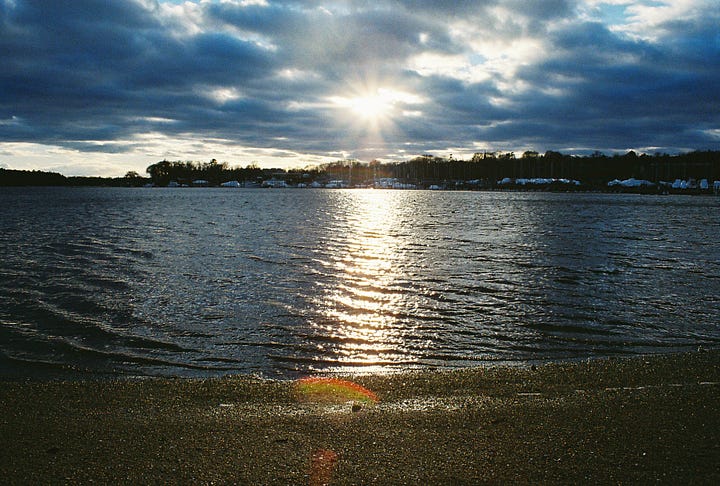
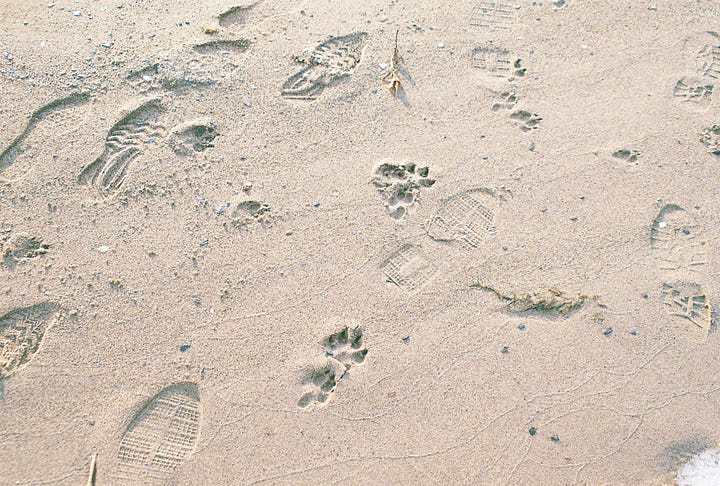
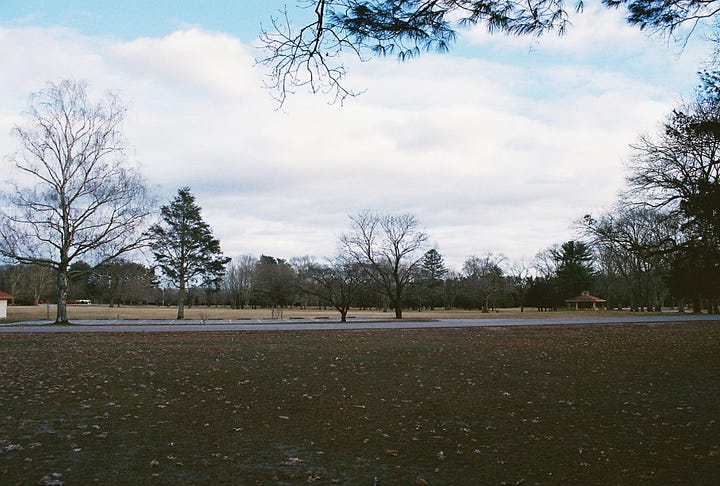
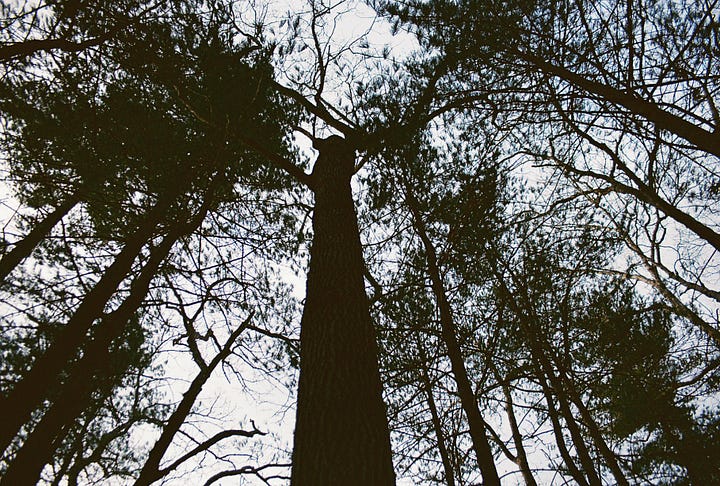
Goddard Memorial State Park was one of the places I went to back then because I had never been there before, and because it was a Wednesday, and because it seemed like it was going to be warmer than it ended up being, and because I had nothing else to do. When I went back then, I was on the end opposite the boat ramp, which is where Google Maps deposited me on January 5th, 2025. I don’t really recommend starting by the boat ramp, but it’s a different perspective, at least, and feels a little like looking at the backside of the park instead of forward. It’s closer to the picnic areas and fields. There were a few critical errors that I made in this particular trip to the park besides my choice of parking location, though: once again, like at Rocky Point State Park, it was cold and windy, and I had futzed around so much at the beginning of the day that I ended up not getting to the park until a little bit before 3pm. Given that sunset was 4:29pm, I didn’t really give myself the meandering several hours that I probably would have preferred—but I also really didn’t want to be out for all that long either given how bad the wind was. You can bundle up so much, but when you don’t have the right pair of gloves for task or weather, you’re setting yourself up for failure, and that was the case. I’m looking forward to going to these places when it’s not below thirty degrees out.
On the way to the park, I drove past a number of older cemeteries, some of which might become topics for future paid episodes—the necropoli call out to me, or whatever—as well as a National Historic Landmark, of which Rhode Island has a few. By the time I got to the park, I already knew that I was going to be on a limit of how much time I could spend there. While I’m fairly certain that there’s probably some grace period given to let people get back to their cars, as a rule state parks generally close at sundown, and it felt like one of those afternoons where you could be guaranteed to be sitting in the sunset for a while. I parked. I saw one group of teens go towards the same path I’d be taking and, to give them a little distance, decided to hang back for a minute by a pond with a sign warning people that it wasn’t safe to skate on the ice, a wood ladder leaning, in a rather rustic way, against a tree next to the water. There are the other structures of the park along the closed road from boat ramp to rest of the park, which is equally as accessible if you just keep driving a little further along the main road outside of the park, which is what I probably should have done but was too impatient and worried about running out of time to do. The whole experience, in fact, taught me a little bit about how I’m doing time management and the things I might want to consider doing to improve that in the future. Letting yourself learn from experiences is probably one of the best reasons to seek out experiences in the first place, I guess.
I go to a lot of places by myself. Rocky Point was something of a “kick the jukebox” moment, as Bil Withonel calls them, the equivalent of unplugging and plugging back in to see if the thing wants to work again, the thing in this case being the brain. We need resets. Sometimes, you go out to these places with your friends, or a friend, and you talk and decompress and analyze and digest and get to where whatever is going on has been thoroughly pulled apart, masticated, dissolved, and the inedible parts left to filter out as waste. These things, these kinds of conversations, are important. Going for the walks allows for the body to work out the tension in the topic, maybe like wringing a towel? I don’t know that that makes the most sense as a comparison, but I’m sticking with it. And there are other trips I have gone on, or adventures if I want to be quirky enough to call them so, with other people, notably my friend Cady, who I have dragged with me (I say dragged, but she has been an enthusiastic navigator) to the Grand Canyon before, and to Death Valley, and who was in the passenger seat when I got pulled over for speeding in Flagstaff coming back. Sorry! Probably not great to wake up to a deputy leaning over your window while your friend hands her RI registration, which looks fake, and her RI license, which also looks fake, at close to midnight, but we survived, I didn’t get a ticket, and the trip was made better for it as I laughed with the law enforcement officer about how Rhode Islanders typically don’t leave Rhode Island when he said that he had never even seen a Rhode Island license before. I also probably shouldn’t talk about getting pulled over for speeding, but it is what it is. In any case, I do sometimes do these things with other people—but more often than not, I’m out on my own. If I waited for people to be free, because I’m an adult and my friends are also adults, it would take a massive amount of planning and waiting and, honestly, plans probably not coming to full fruition because that’s how life is. You don’t hold it against anyone for being busy, you just acknowledge that you’re all busy and that you’ll see the people you love when you see them, and you send the invite a couple of times as the date to leave gets closer, and they’ll either join you on the trip, or they’ll cheer you on from their desk at work while you put another 25 thousand miles on your Corolla. (Toyota please sponsor me.)
Like in April, I went to Goddard Memorial State Park on my own. This is my message to everyone out there that it’s okay to do things by yourself, even if people who love you get worried for you. They love you. That’s why they care. Go out to places anyway. At the very least, you can say you went. Walking in the woods, even if they’re not particularly dense woods, can activate something deep down inside, and the truth is, when you do it on your own, you’re probably going to listen to the world around you a little more closely, with a little less distraction. Each creaking of the trees’ branches, grinding against each other, each bird chirp—chirps that, as a kid, I’d try to imitate to get them to maybe sing back and acknowledge me as one of their own—each shuffle alerting you to some small animal, each brush of wind through leaves—isn’t it worth paying attention? Isn’t it worth living in the world and listening for what it says? Google Docs, when I typed that, wanted me to correct “for” to “to,” but I mean that you are listening as in looking out. Seeking with your ears. This is also my message to everyone out there that it’s okay to play with language to make it specific to what you’re trying to say, not what the autocorrect thinks you’re trying to say. I guess get creative with it. What fits in the meter of your mouth? That’s too much. I’m sorry. I’m not really sorry.
Goddard Memorial State Park has a lot visually in common with a number of other state parks that I’ve been to before; some of the key features of many Southern New England parks include tall, skinny trees, which may or may not be that old; some kind of bodies of water, even if the park itself is not situated on swamp land, which many of them are; a few clearly marked trails, but also the kinds of trails that come from people choosing their own adventure or not really being able to differentiate trail from sparsity of trees, which might be a consequence of how skinny many of these trees are in these parks. There is less litter at Goddard Memorial State Park than at Rocky Point, but it’s still there—the always present plastic of the Dunkin Donuts extra large iced cup peaking with its orange and pink from underneath fallen leaves, like some kind of Memento Mori about the persistence of death by PFAs. Et in Arcadia, ego.
Despite the wind, it’s a peaceful walk. I’m pausing to take photos a little too often, even though I should be more aware of the time. It’s hard when the sun is coming through the trees at this particular angle at this particular time during winter—you can think about Emily Dickinson’s “certain slant of light” and the ache that winter afternoons conjure, the coldness of the sun in this frame. I’m moving slowly, slower than I probably should be, given how quickly the sun is going down. It takes me a lot longer to get to the beach trail than it normally probably would have. I choose not to worry about it.
There’s always something remarkable to me about when there’s ice on the shore of anything, especially when the water isn’t necessarily fresh water; when I get down to the beach, I’m looking at the white frost weighing down the grass here. Things feel picturesque. When I look inward, back towards the trees, and I see the small patches of grass, I think to myself, That’s New England Gothic: bleakness, cold, unfriendly, unwelcoming. Just the way we like it, right? Beyond the grass, though, I notice an orange and white sign. I make my way over to it:
RHODE ISLAND DEPT. OF ENVIRONMENTAL MANAGEMENT POLLUTED AREA → TAKING OF SHELLFISH PROHIBITED.
Like I said, Et in Arcadia Ego.
Contaminated Water
I think the first thing I want to mention is that this is not a strictly Rhode Island problem. This is happening in a lot of coastal and wetland areas, so it’s not like Rhode Island’s waters are especially nasty compared to everywhere else; Rhode Island probably has a much greater impetus to address this, though, given how significant the shellfish and fishing and the aquatic recreation industries are to the economic health of the state. I mean, if you can’t go into the water in the Ocean State, what are we even doing here? But again, the problem of contaminated and polluted water is hardly a Rhode Island problem—it is a global issue, and the ways in which the problem expresses itself are going to look a little different from state to state. You can even check your local waterways using the EPA’s great data tool, How’s My Waterways, which can tell you how impaired your waterways are, the probable causes of the impairment, and whether or not there are plans in place to fix them.
Historically, the water problem in Greenwich Cove, which is the body of water bordering Goddard, has been fecal coliform—a type of bacteria that includes e.coli. The last time the water quality was reported was in 2022. The biggest contributors are failing septic systems and urban sewage run off. This information can be found on both the How’s My Waterways site and through documents hosted by the RIDEM’s website, though looking for them on the website as opposed to through a Google search is somewhat difficult. It is probably reductive and maybe not as specific to call it “poop water,” but for a layman who doesn’t have a degree in environmental science or in biology, like myself, that’s what it sounds like, and that’s the connotation I think a lot of people probably have when they see the word “fecal.” Because fecal is poop.
Each summer, beaches in Rhode Island are closed down by the combined forces of the Rhode Island Department of Health, or RIDOH, and RIDEM because of the presence of excessive bacteria in the water. And people, of course, complain. It is in the Rhode Island state constitution that access to the water is a protected right for the people who live here, so why is it that every summer we’re seeing these beaches become unavailable? I understand the frustration, though it’s not pointed in the right direction. We should be getting angry about the fact that these waterways are so impaired that they are considered a reasonable health risk to the general population, so much so that the department of health has to tell us, “You cannot go in here.” We should be getting angry that our shellfish population—the natural filtration systems of waterways—are so at risk from the presence of bacteria like e.coli in the water that they are not safe to eat in a state that is known for its seafood. The water is the best part of Rhode Island, and this is a state that is made for summer vacation and beach recreation, but that doesn’t mean anything if the water is full of shit.
While this is not strictly a Rhode Island problem in the sense that almost every state is facing the challenge of managing their polluted waterways, it is a problem that Rhode Island has to solve for itself. It’s also not as though we don’t know where the sources of pollution are coming from. Both the Audubon Society of Rhode Island and Save the Bay: Narragansett Bay have web articles which list out in easy to understand language the sources of the pollution in our water. In Rhode Island, the biggest contributors to this pollution include chemicals, metals, and petro products, the bacteria in sewage, animal waste, and too many nutrients from fertilizer. When we look at the impairment of the waterways, the EPA explains why, and what it usually looks like is a combination of too many nutrients, which causes the toxic algae growth that also closes bodies of water and causes significant harm to aquatic life by depriving the water of oxygen, too much bacteria, which comes from combined sewage overflows, failing septic systems, and stormwater run-off, and the presence of harmful chemicals in the water, like gasoline.
These are problems with solutions. Stormwater management can be improved, we can phase-out cesspools, and we can demand that our wastewater treatment facilities be upgraded. On an individual level, we can stop dumping into storm drains and make sure that they’re clear, we can reduce the use of fertilizer on our lawns—and even turn our lawns into beautiful rain gardens instead to absorb the runoff.
Potowomut, where Goddard Memorial State Park specifically is, has a troubled history with its sewer lines; the main sewer line can’t reach it because of where it is, and between the City of Warwick and towns of East Greenwich and North Kingston, they still can’t figure out exactly how to fix the sewage system, or get access to the individual neighborhoods—so a lot of that sewage ends up in Narragansett Bay. It’s a real shitty situation. I’m sorry. I’m sorry.
Really importantly, we can clean up our dog’s poop. It’s already well-known etiquette to pick up pet waste, even though some people have a problem with that—but just bagging it and then leaving the bag of dog poop on a rock or tied to a tree is not picking it up. I remember a few summers ago, hiking, and the trail I was on had a very clear sign reminding hikers that dog feces are a public health problem. Besides just being gross, this can also lead to one of your favorite beaches being closed this summer by allowing even more fecal contamination into the waterways, spreading even more bacteria, and running up that RIDOH public health risk. It might sound like I’m unfairly targeting dog owners—all animals poop, so why am I not getting big mad about seagulls, or whatever—but when you see the poop on the ground, or you see the plastic baggies, that poop is dog poop. Cats are their own environmental hazard, and I can go on and on about how they decimate local bird populations and how irresponsible it is for cat owners to let their cats roam freely, but it’s not cats who are being walked around parks, and it’s not bagged cat poop that people are leaving around.
I think it’s normal for people to not think about the impacts that even small, seemingly inconsequential choices can have around them. How often do we just do things because we’ve always done them, or because that’s how we were taught to do them, without necessarily having a reason to think anything of it? Part of the challenge of living in a changing world, or one that’s facing crises as a result of human action, means thinking about ourselves in the context of that world and considering what world it is we want to live in. By no means am I trying to excuse industrial polluters; much of the problem is industrial, especially the closer we are to metro areas. So much of the water near me is contaminated by industrial pollutants, a kind of contamination that requires community effort and legislation to enact change against. This work matters, too. In the meantime, we have the responsibility on both that community and individual level to make this place a world where we want to be, and to protect it, and it is often easier to start enacting those changes on individual levels to prepare ourselves for the difficult labor of demanding widespread policy change. We need to practice what we preach, so to speak. Industry will always point to the individual and say, Well, what are you doing, you’re part of the problem, too. We have to be able to look industry back in the face and say, I’m actually doing my part to solve this problem. What are you doing?
Okay, I’m stepping off of my soapbox. I apparently had a lot more to say about water pollution than I thought I did when I started talking about it.
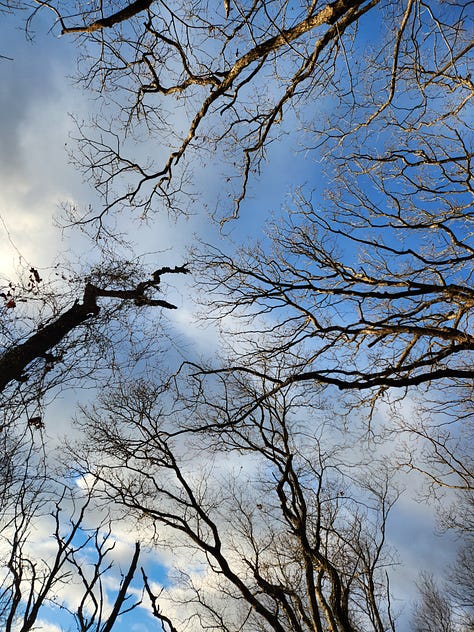
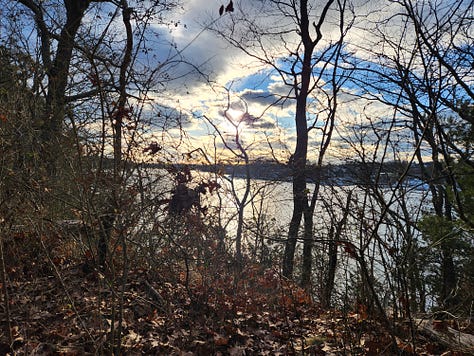
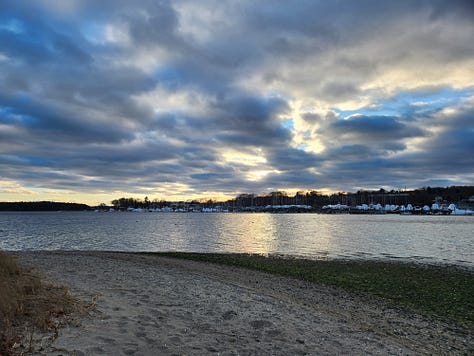
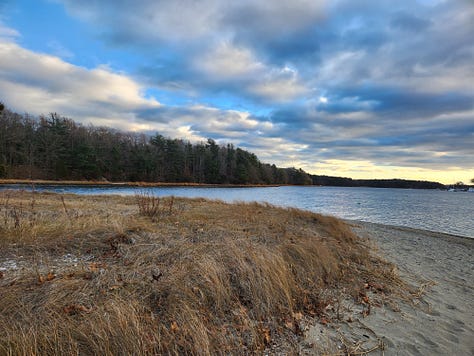
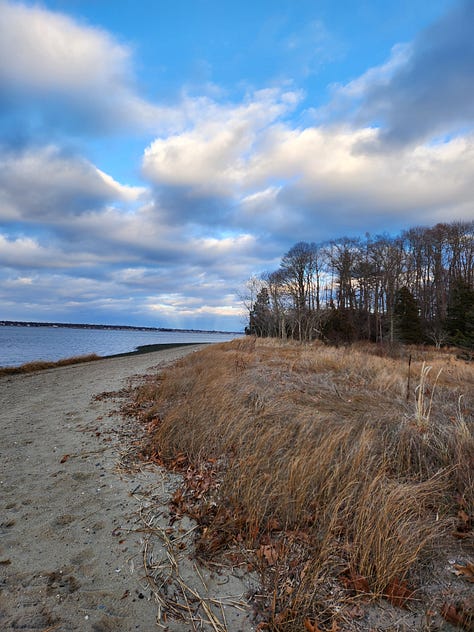
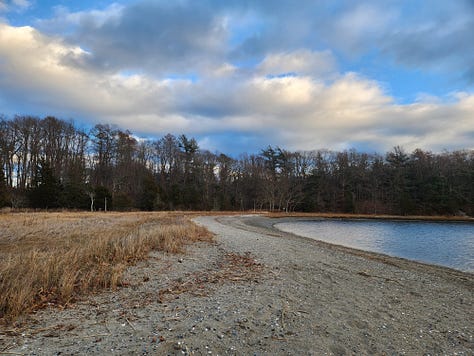
Outro
I didn’t think I’d be talking so much about water pollution when I went to Goddard Memorial State Park, or even when I saw the pollution sign, but here we are. As I write this, parts of Kent County are under a boil-water order because of a water main break, which kind of feels relevant. Pollution aside, it’s still worth going to the park. There are a lot of really pretty things to look at, the trails are easy enough to walk, and as long as you’re not taking the shellfish, you can still enjoy being in the presence of a waterfront. I’m curious to know how much other people know about their bodies of water. Is the How’s My Waterways tool as interesting to other people as I find it? Or is this my own mini-hyperfixation? Goddard Memorial State Park represents a specific kind of New England outdoors: while I was there, I was thinking a lot about the woods at the end of my street when I was a kid. The water there was really, I think, just pooling bodies and depressions in what was otherwise a swamp, so that’s a major difference between the two places, but, despite knowing that this place has been around for a long time, it didn’t really feel like many of the trees were all that much older than me. That doesn’t have to mean anything, but for whatever reason, I feel it strongly enough to mention it. Anyway, if you’re interested, this is one of the parks where you can reserve space in advance for events and special occasions, and, given how large it is, I think that it’d probably make a pretty good spring or summer party location. I liked Goddard when I went in the spring and parked in the actual parking lot, and I even liked it now, in the cold of early January, parked in the boat ramp area. It’s worth going and seeing what’s there. Just make sure you pick up after your pet.
References
How's My Waterway - Home, https://mywaterway.epa.gov/. Accessed 16 January 2025.
“Different types of water pollution.” Save the Bay, https://savebay.org/bay_issues/water-quality/toxic-pollution/. Accessed 17 January 2025.
“Goddard Memorial State Park (1927).” Rhode Island State Parks, https://riparks.ri.gov/History-HistoryGoddard. Accessed 17 January 2025.
U.S. Environmental Protection Agency Office of Water. NONPOINT SOURCE SUCCESS STORY Rhode Island Installing Infiltrating Catch Basins Helps Reduce Bacteria in Greenwich Cove. January 2018, https://dem.ri.gov/sites/g/files/xkgbur861/files/2022-06/success-story-greenwich-cove.pdf. Accessed 15 January 2025.
“Water Quality and Availability.” Audubon Society of Rhode Island, https://asri.org/lead/issues/water-quality-availability.html. Accessed 17 January 2025.
Looff Carousels (The RI State Parks website misspells this as “Loof,” highlighting the need for copyeditors) are incredibly ornate, handmade carousels. Rhode Island has a lot of them.
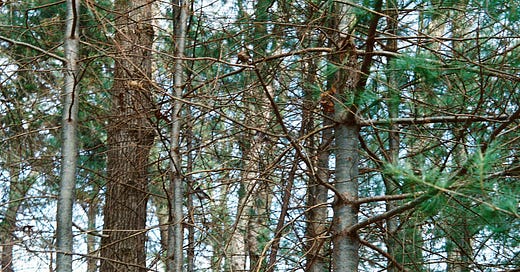



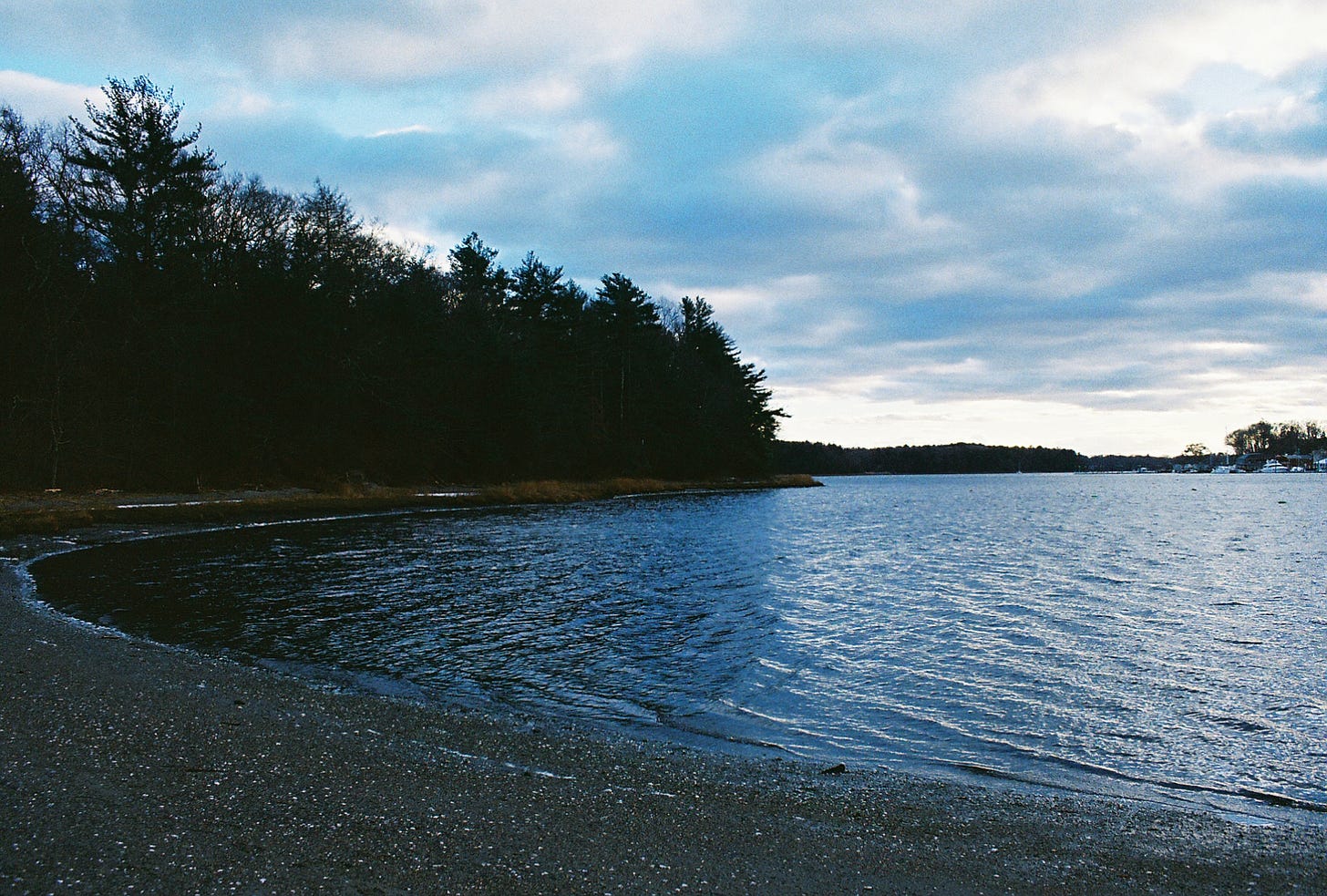
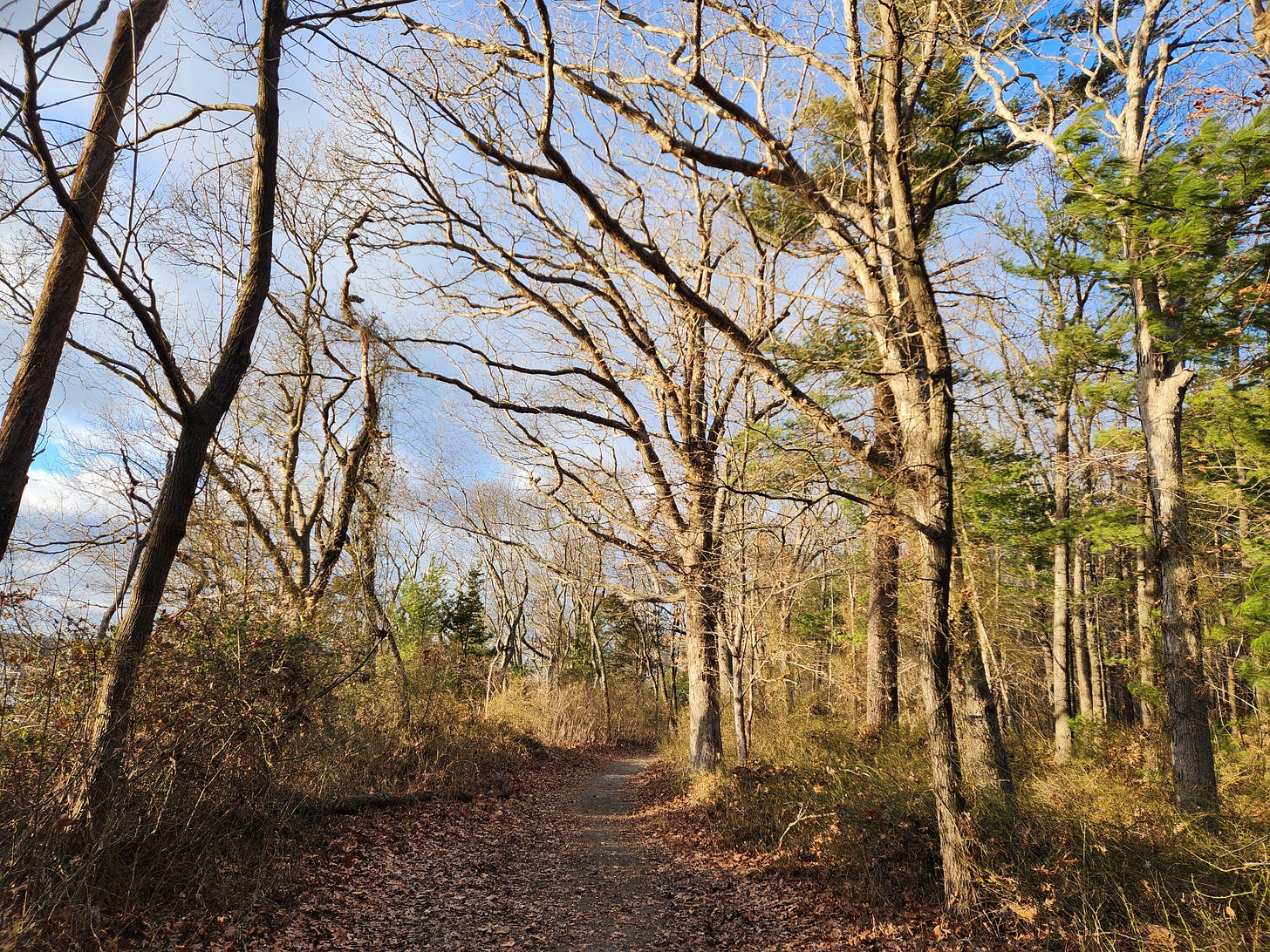
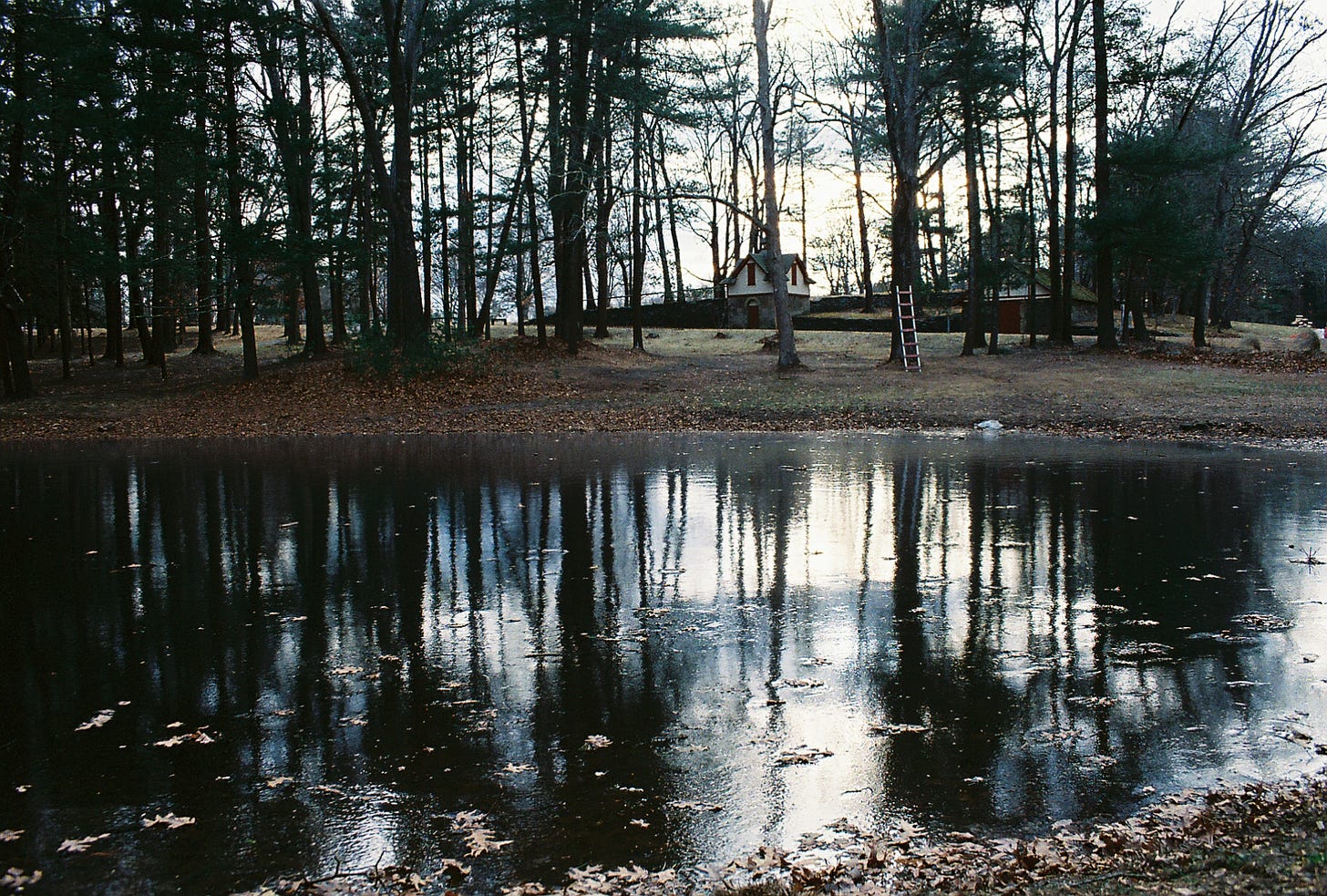
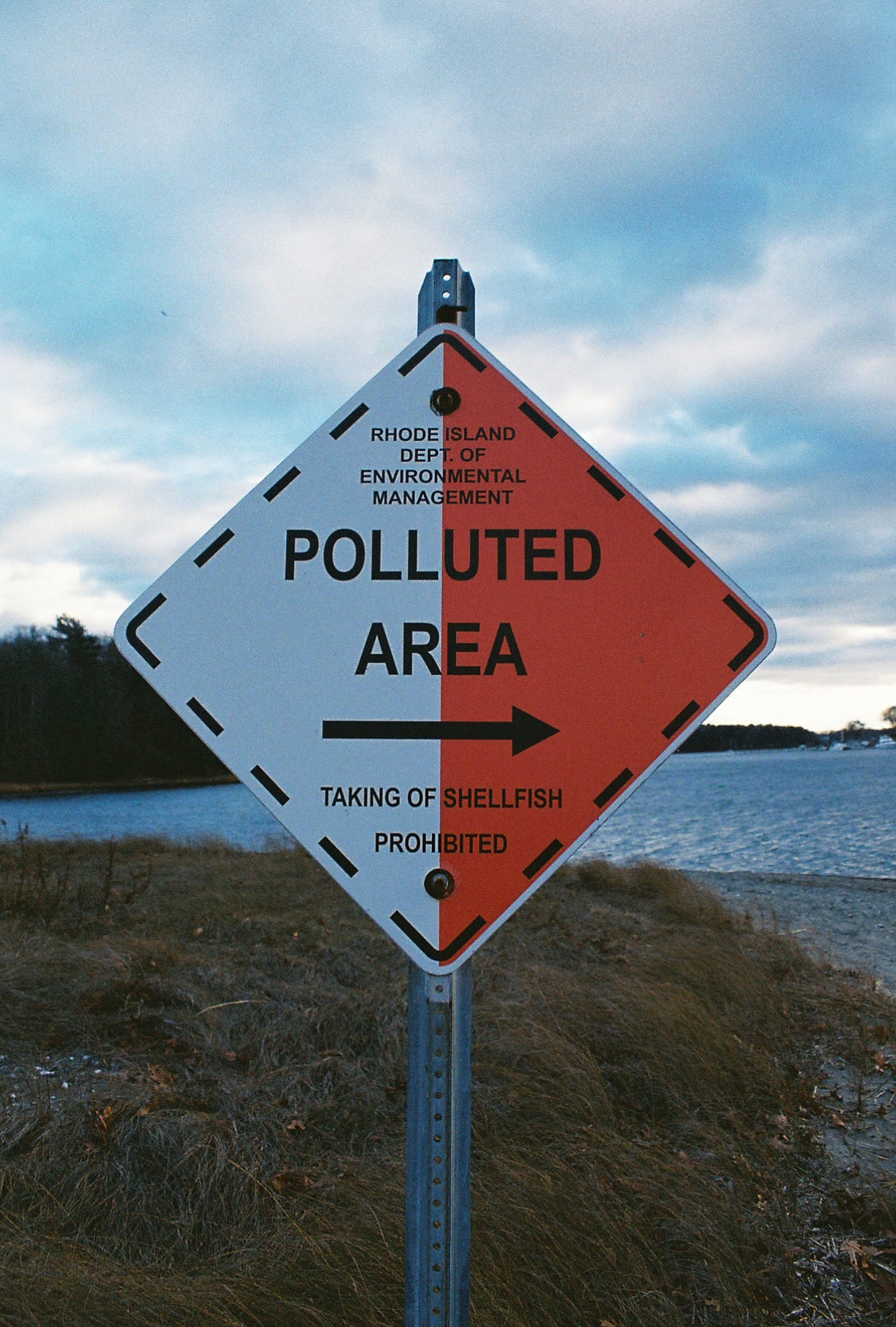


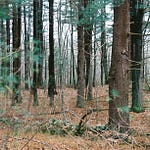
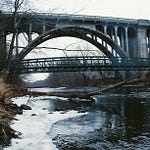
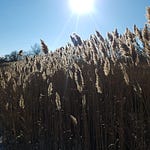
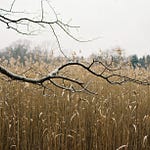
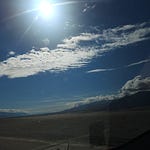


Share this post